The Marvel Cinematic Universe has built its success on larger-than-life heroes and explosive action, but it hasn’t strayed far from its comic book roots. While the MCU often tweaks stories to fit modern audiences, it has stayed surprisingly faithful to many key moments from the comics. The filmmakers have shown a clear respect for Marvel’s history, often pulling scenes straight from the comics or adapting them in a way that better fits a modern narrative. Smaller details, like Hawkeye’s family life or Wanda’s reality-warping powers, also reflect deep cuts from the source material. These choices show the consistent effort on the MCU's part to adapt stories without losing their original appeal. So here are 15 times the Marvel Cinematic Universe stayed true to comics:
1. Captain America’s Origin Story
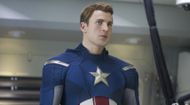
Steve Rogers starts as a frail man who gets rejected by the military. He later becomes Captain America after undergoing the Super Soldier Serum treatment. This storyline follows Captain America Comics #1 from 1941. The movie sticks to the core of his character by showing his determination and strong moral values. His transformation into a hero during World War II stays true to the source material. The scene where he jumps on a grenade highlights his bravery and selflessness. It reflects how the MCU stays true to the comics and keeps the character’s essence intact. This origin story made Captain America a symbol of courage and set the tone for his role in the franchise.
2. Spider-Man’s Uncle Ben and “With Great Power” Theme
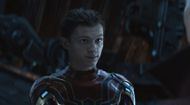
The MCU does not show Uncle Ben’s death on screen, but it still shapes Peter Parker’s character. The idea of responsibility runs through his actions and reflects the lessons from Amazing Fantasy #15 in 1962. Peter struggles to balance his personal life and his duties as Spider-Man. This keeps the spirit of the original story alive without directly repeating it. The iconic line about great power and responsibility finally appears in Spider-Man: No Way Home. It cements Peter’s growth as a hero and ties back to his comic book origins. The decision to focus on his struggles instead of retelling his origin allows the MCU to stay fresh while honoring the source material.
3. Iron Man’s Origin in Afghanistan
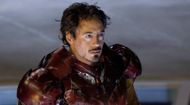
Tony Stark’s origin story in Iron Man stays close to the comics. It is based on Tales of Suspense #39 from 1963. The movie shows him being captured, injured, and forced to build weapons for his captors. The location was updated from Vietnam to Afghanistan to fit modern times, but the core events remain the same. Tony builds the first Iron Man suit in a cave and escapes. This moment shows his intelligence and sets up his transformation from a selfish billionaire to a hero. It also marks the beginning of his mission to use technology for good. The adaptation sticks to the comic’s foundation while adding details that make the story more grounded and relevant.
4. Loki’s Schemes in The Avengers (2012)
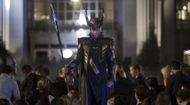
Loki’s role as the villain in The Avengers feels like it came straight from the comics. His plot to manipulate others and lead an invasion mirrors Avengers #1 from 1963. The film captures Loki’s ability to deceive and outsmart his enemies, which has always been central to his character. His rivalry with Thor adds more depth to his actions and keeps him from being a one-dimensional villain. The invasion of New York raises the stakes and forces the Avengers to come together as a team. The MCU stays loyal to Loki’s roots by showing him as a clever and unpredictable enemy. His story sets the standard for how the franchise handles villains while respecting the source material.
5. Wanda Maximoff’s Powers and Chaos Magic
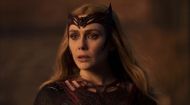
Wanda’s powers in WandaVision match her abilities in Avengers #185–187 from 1979. The show explores her ability to bend reality, which mirrors the chaotic magic she uses in the comics. Her grief plays a key role in how her powers spiral out of control, just like in her comic book arcs. The events of the show also draw comparisons to House of M, where she changes reality on a much larger scale. Wanda’s powers make her one of the most unpredictable characters in the MCU. Her story highlights how staying close to the source material can make a character more layered and complex. The adaptation sticks to what worked in the comics while giving Wanda a modern twist that fits the MCU’s larger story.
6. Thanos’ Quest for the Infinity Stones

Thanos’ hunt for the Infinity Stones in the MCU follows The Infinity Gauntlet storyline from 1991. In both versions, he collects the stones to reshape reality and establish dominance over the universe. The films show the stones granting him powers like controlling time and bending space, which mirrors the comics. His motivations and actions match the cold and strategic personality fans know from the books. The Infinity Saga ties multiple films together by building tension around his mission. The adaptation made Thanos one of the most iconic villains in film history without losing the qualities that made him stand out in the comics.
7. Captain America Lifting Mjolnir
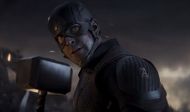
Steve Rogers lifting Mjolnir in Avengers: Endgame follows The Mighty Thor #390 from 1988. In both versions, Captain America proves himself worthy to wield Thor’s hammer. The MCU builds up to this moment by showing Steve’s strong character and moral integrity throughout the series. The scene feels earned because it highlights his courage and sense of justice. It mirrors the comic’s message about worthiness without changing its meaning. The moment became one of the most memorable parts of the MCU and added to Steve’s legacy as a hero. Fans recognized it as a perfect adaptation of one of Marvel’s most iconic comic book scenes.
8. Black Panther’s Introduction in Civil War
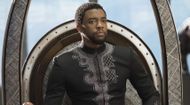
T’Challa’s first appearance in Captain America: Civil War reflects his debut in Fantastic Four #52 from 1966. Both versions introduce him as a skilled fighter and a leader determined to protect his people. The MCU keeps his noble and composed personality intact and highlights his sense of duty as Wakanda’s king. His Vibranium suit stays close to the design in the comics, showing advanced technology and combat readiness. His pursuit of justice for his father’s death adds emotional weight to his character. The introduction sets up his standalone film and establishes him as one of Marvel’s most respected heroes without changing his roots.
9. The Guardians of the Galaxy Team Formation
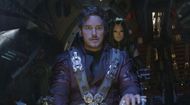
The MCU’s version of the Guardians of the Galaxy comes from Annihilation: Conquest in 2008. The team includes Star-Lord, Gamora, Drax, Rocket, and Groot, who were brought together in the comics. Their personalities and backstories stay faithful to the source material. Star-Lord’s humor, Gamora’s fighting skills, Drax’s straightforward thinking, Rocket’s inventiveness, and Groot’s simplicity match their comic counterparts. The film modernizes certain elements but sticks to the group’s dynamic and teamwork. The decision to focus on this lineup instead of the original 1969 version gave the team a more relatable and fun vibe. The adaptation turned lesser-known characters into fan favorites without losing what made them work in the comics.
10. Hulk vs. Hulkbuster Armor
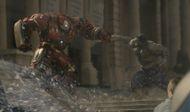
The Hulkbuster fight in Avengers: Age of Ultron closely follows Iron Man #304 from 1994. In both versions, Tony Stark builds the armor as a defense against the Hulk’s uncontrollable strength. The film shows the armor as a reinforced and oversized version of the Iron Man suit, just like in the comics. The fight highlights Tony’s fear of losing control and mirrors the tension seen in the original story. It also emphasizes the Hulk’s destructive power and the effort required to stop him. The adaptation became one of the MCU’s most intense action sequences. It sticks to the source material while delivering a visual spectacle that fans immediately recognize.
11. Hawkeye’s Family Life
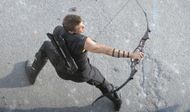
Clint Barton’s family life in the MCU closely follows The Ultimates (2002), where he is shown as a husband and father trying to balance his personal life with his role as a hero. In Avengers: Age of Ultron, Clint is revealed to have a wife and children living on a quiet farm away from the chaos of his missions. His family is not just background details—they shape his decisions and explain his desire to keep fighting even when he wants to retire. In Avengers: Endgame, losing them during the Snap drives him into a dark and vengeful spiral as Ronin. Their absence shows how much they mean to him and pushes him to risk everything to bring them back. This storyline gives Clint more depth and raises the stakes every time he steps into danger. It sticks to the source material and highlights his role as someone who fights not for glory but to protect the life he built. It keeps him grounded and human in a team filled with gods, soldiers, and superpowered heroes.
12. The Death of Gwen Stacy (Adapted for MJ)
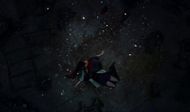
Spider-Man: No Way Home borrows elements from Gwen Stacy’s fall in The Amazing Spider-Man #121 (1973). Instead of Gwen, the MCU uses MJ to recreate the moment when Spider-Man struggles to save someone he loves. This version changes the outcome by letting MJ survive, which gives Andrew Garfield’s Spider-Man a chance to redeem himself after failing to save Gwen in his universe. The scene honors the emotional weight of the comic while adding a new layer of hope. It stays connected to the original story without repeating the same tragedy and gives fans a satisfying conclusion to Garfield’s arc.
13. Peggy Carter and Steve Rogers’ Love Story
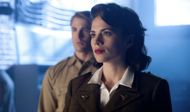
Steve Rogers’ relationship with Peggy Carter in the MCU reflects her role in Tales of Suspense #77 (1966). Their bond starts during World War II when Peggy supports Steve and believes in his potential. The MCU builds on this connection by showing how Peggy continues to inspire him long after he disappears. Steve’s decision to return to her in Avengers: Endgame brings their story full circle. It gives their romance closure without losing the emotional depth seen in the comics. Their relationship stands out as one of the most heartfelt arcs in the MCU and highlights Steve’s loyalty to the people he loves.
14. Doctor Strange’s Training and Mystical Journey
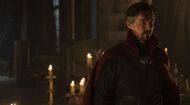
Stephen Strange’s journey from an arrogant surgeon to the Sorcerer Supreme closely follows Strange Tales #110 (1963). After losing the use of his hands in a car accident, he travels to Kamar-Taj in search of healing. The MCU sticks to this origin by showing his struggles and doubts as he learns magic under the Ancient One. His training pushes him to let go of pride and embrace his new role as Earth’s protector. The adaptation highlights the mystical elements of the comics without losing focus on Strange’s character growth. It introduces the magical side of Marvel while staying grounded in his transformation.
15. The Civil War Conflict
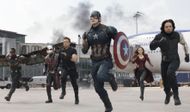
Captain America: Civil War adapts its central conflict from Civil War (2006) by focusing on superhero accountability and government oversight. The MCU keeps the focus on Steve Rogers and Tony Stark as they clash over whether heroes should operate under control. It uses the same themes as the comics to explore trust, freedom, and responsibility without turning either character into a villain. The personal stakes make the fight between the Avengers feel real and believable. The MCU simplifies the story for its universe but stays true to the original by showing how ideological differences can break even the strongest alliances.
Love movies? Try our Box Office Game and Movie Grid Game to test your film knowledge and have some fun!
